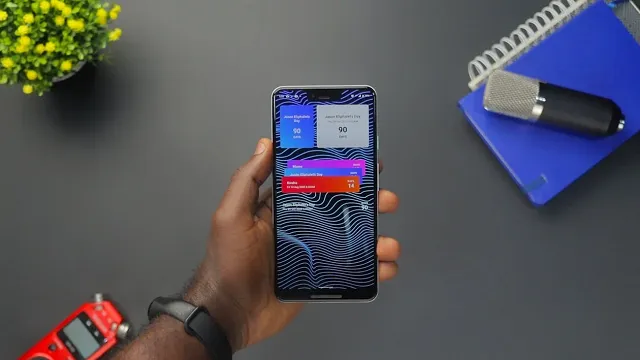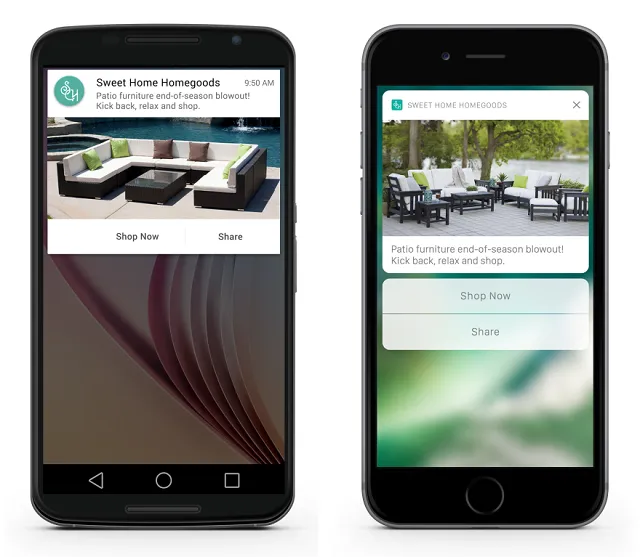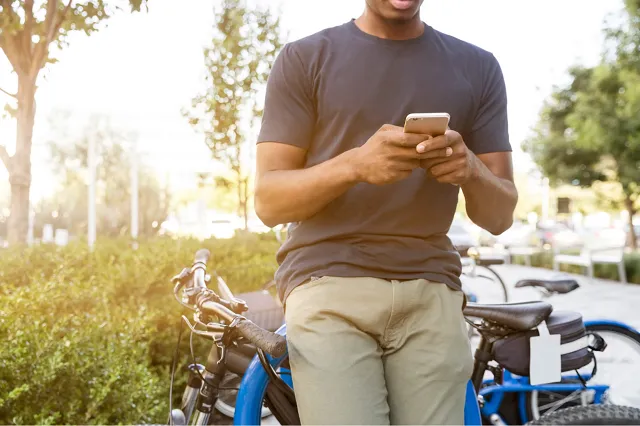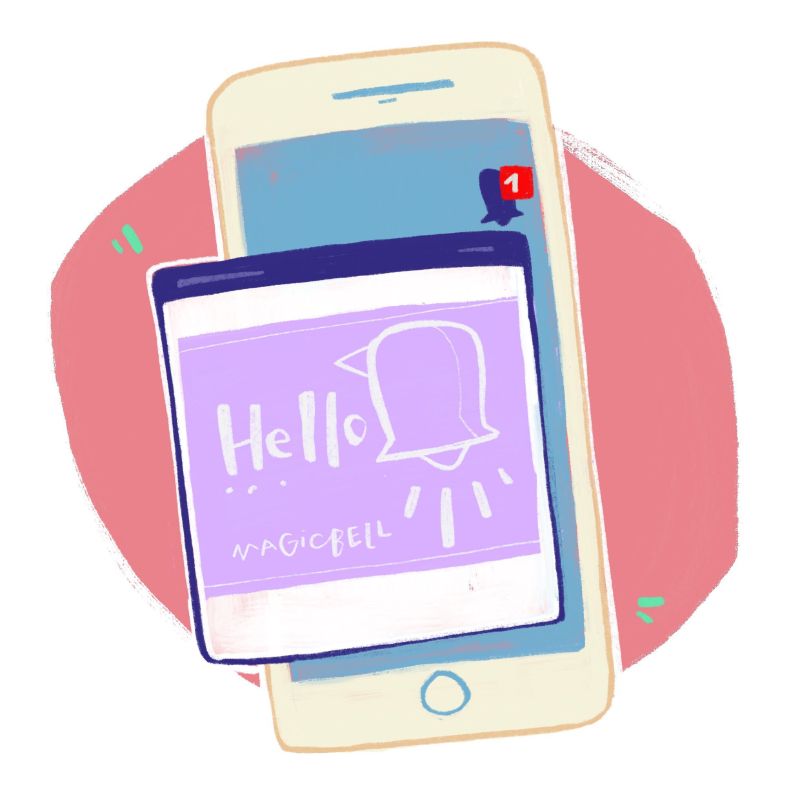Rich push notifications are enhanced mobile alerts that include multimedia elements like images, videos, GIFs, and interactive buttons, going beyond the text-only format of standard push notifications. They deliver more engaging, visually compelling content that drives higher click-through rates and user interaction by providing richer context without requiring users to open the app.
Push notifications have been around since 2009, two years after the iPhone was released. As mobile technology advances, businesses and developers are always searching for new ways to grab users’ attention and increase engagement
Rich push notifications, which support images, video, GIFs, and other interactive, non-text features designed to turn more heads, can provide a much better experience than standard push notifications.
Even though rich push notifications aren’t widely supported yet, they’re an interesting medium to experiment with. Including them in your notification strategy will allow you to see how far you can take your visuals and branding to increase user engagement.
Push notifications have a pretty good engagement rate compared to other communication channels. In fact, Android devices have an 81% push notification opt-in rate, and iOS has a 51% opt-in rate. Still, you’re competing against other businesses, so it’s important to design notifications that are as engaging as possible.
Whether you have an existing push notification strategy or you’re brand-new, experiment with rich messaging and see if it improves your engagement metrics. In this guide, we’ll break down what rich push notifications are, explain why they’re so helpful, and show you how to integrate them into your business’s communication strategy.
What Are Rich Push Notifications?

Photo by Emmanuel Jason Eliphalet from Pexels
Rich push notifications are messages that include rich media, such as images, GIFs, videos, or audio. Some even include interactive elements like buttons, links, and carousels.
Most push notifications are text-only, but rich notifications provide a more dynamic and engaging user experience, helping you capture users' attention more effectively.

Image source: StackOverflow
Rich push notifications work well with existing push notifications. All you need to do is incorporate rich media content into your existing messaging. This interactive content aligns with your copy, creating a more visually appealing branded experience.
Rich push notifications elevate your push game by allowing you to incorporate more than just copy into a message. Think of it as a mini-email in a notification, with the possibility of including copy, images, videos, audio, GIFs, and interactive calls to action (CTAs).
Rich Push Notifications on Different Devices
Rich notifications have been around for over ten years but are largely underutilized. The first instance of rich push was the ability to include large images with the release of Android 4.1+ in 2012. Apple followed a few years later, adding even more support for different kinds of rich media with the release of iOS 10 in 2016.
Let’s break down how different systems support rich notifications and the types of content you can include for each device and system.
iOS
Apple is leading the way with support for rich push notifications. The following are all the types of media you can include in a rich push to iPhones and iPads running iOS 17:
- Image: JPEG, PNG, and GIF files
- Video: AIFF, WAV, MP3, and M4A files
- Audio: MPEG, MPEG2, MP4, and AVI files
It’s also worth noting that iOS provides a way to include alternative text for unsupported devices and browsers. You should always add alternative text to create accessible experiences, but it’s also useful for getting your message across if the content doesn’t load.
Suppose your rich push notification includes a giant image of two people rowing a canoe down a river. In that case, you can provide alternative text that describes the image: “Two smiling adults row a canoe down a river in sunny weather.”
If your lovely giant canoe image displays to an unsupported device or a bug prevents it from loading, users will still understand the intent behind the unloaded image thanks to the alt text.
Android
Android support is more limited at the moment. Only large images in static JPEG or PNG format are supported. You have to share all other rich media content, like GIFs, through links instead of directly loading them in the notification.
While Android doesn’t technically support GIFs, you can still send them to Android devices in rich push notifications. The catch is that, much like email clients that don’t support GIFs, they will freeze on the first frame and not play through.
Desktop Browsers
Desktop browser support still needs improvement. Chrome 56 introduced a version of rich push with support for large images in Android mobile and desktop browsers. Unfortunately, there is currently no support for rich push notifications on Mac desktop browsers.
Benefits of Rich Push Notifications

Photo by LinkedIn Sales Solutions from Unsplash
Rich push notifications have more limitations than traditional text-based messages, so some businesses don’t bother with them. However, rich media has so much to offer, so integrating more media into your push notification messaging is worth it.
We’re just scratching the surface here, but there are so many benefits of using rich push notifications, including:
- Improved engagement and conversion rates: Rich media significantly improves user engagement. Few people want to read a wall of text, but images can break things up and pique users’ interest. In fact, rich media improves engagement by 25%.
- Better open rates: Do you need more people to open your notifications? Rich media is the answer. Messages using rich media see a 56% improvement in open rates.
- Targeted personalization: Rich push notifications give you another avenue for personalization. Incorporate user-specific rich media to make messages more relevant to each recipient.
- Improved user experience: You love rich media for the results it generates, but users love it, too. Users can receive previews, updates, or important information without opening the app, enhancing their overall experience. This convenience and added value make it a cinch to build stronger customer relationships through rich media.
7 Push Notification Best Practices
Not every device and browser supports the same things, so you must thoughtfully develop and design notifications that work in these ecosystems. Follow these rich push notification best practices to get more mileage from these interactive notifications.
1. Continue To Write Great Copy
While rich media can enhance the notification, ensuring the copy conveys the whole message is still essential. Think of rich media as an accompaniment to your already compelling and exciting copy.
After all, not all users can receive rich media, so you can’t put essential information only in media files. The copy should always speak for itself, so put time into your messaging. When in doubt, you can always A/B or split-test your copy to see what subscribers find most compelling.
Rich push notifications don’t give you more characters for copy, so you still have to follow the same character limit here as you do for regular push notifications. There’s no standard character limit across devices or browsers.
Support for a Title element is 30 to 50 characters, while a Description element can be a few hundred characters. Ultimately, it depends on the device and browser, so check the most recent character limits to understand what you have to work with.
2. Optimize Your Rich Content
Click-through rates can increase by as much as five percent when rich push notifications include a large image. But just because you can send a huge file to a user doesn’t mean you should.
Optimize rich files to be the smallest size possible without hurting the user experience. Smaller content loads faster and gives users a better overall experience, so follow these sizing guidelines for all rich content:
- Image: 5 MB limit
- Video: 50 MB limit
- Audio: 10 MB limit
But what happens if you can’t optimize your media to fit these limits? If you’re sending large files in your rich push notifications, consider using a content delivery network (CDN). CDNs speed up content delivery by caching the content on servers located closer to the user’s physical location.
3. Add Interactive Calls to Action

Photo by Eddy Billard from Unsplash
Interactive CTAs (also known as push action buttons) and deep links aren’t unique to rich push notifications but are a great addition to rich media content. Interactive CTAs provide the user with options, like exploring your app or testing out a new feature, with the tap of a notification. They allow users to act directly from the notification, bypassing the app altogether.
If you’re worried people will dismiss your notifications because they don’t have time to interact with the content, provide reminder CTA options. A CTA of “Remind me in two hours” allows users to interact with it when they have more time.
Voice-activated CTAs are also gaining traction. More users are relying on their smartphone voice assistants for quick replies and actions without opening the app — or looking at a screen at all.
Voice-activated commands through Google Assistant, Siri, and Alexa are the next frontier for these push notifications, so ensure your media and messages work well with voice-activated features to keep up with user expectations.
4. Watch Your Timing and Frequency
Rich push notifications definitely turn more heads, but users will still find these notifications annoying if they receive too many. Sending just one weekly notification can cause 10% of users to disable notifications. The more notifications you send over a period of time, the higher your unsubscribe rates will be.
Nobody likes unsubscribes, so strike a balance to avoid annoying your users. Generally speaking, it’s best to send only a couple of notifications a month to your users. Tuesdays have the highest reaction rate (8.4%), followed by Sunday (8.1%), while the best times for sending are from 12 to 1 pm and 7 to 8 pm.
Of course, these are just general guidelines. All audiences have different preferences, so check your engagement data to find the most relevant notification timing for your target audience.
5. Personalize Where Possible
Did you know that personalization can boost notification engagement rates by as much as 400%? Personalized messages also see an 18% lift in retention compared to generic broadcast messages, so personalization is key if you want subscribers to stick around and engage.
Many businesses understand the value of personalization but aren’t sure how to execute it. Fortunately, solutions like AI-driven personalization and automation can do a lot of the heavy lifting for you.
AI targeting tools make it possible to personalize rich media based on user location, past order history, behavior, and more. Some platforms might require you to upload different versions of rich media, but AI content creation tools make it a cinch to create pro-level media with just a few prompts.
6. Roll out Rich Media Across Platforms
Rich push notifications are best known for driving smartphone engagement, but you don’t have to limit yourself to mobile users. You can send rich push notifications across multiple platforms, including the web and desktop.
Cross-platform integration is especially helpful because users are on so many platforms and channels. Instead of developing these rich notifications piecemeal, use a solution like MagicBell to create an all-in-one notification inbox for your subscribers without burdening your developers.
7. Test and Collect Feedback
Implementing rich push notifications takes a bit of elbow grease. Don’t you deserve to see results for all that hard work?
Testing, monitoring analytics, and gathering user feedback will help you design rich push notifications that make an impact. Whether it’s push notification analytics, app heatmaps, or user feedback forms, seek out data-driven insights to improve the quality of your notifications. If you’re designing rich web push notifications, for instance, check out webpushtest.com for a demo of standards based web push notifications across all platforms.
Elevate Your Product with Rich Push Notifications
The new, new notification animation blinks calmly in the MagicBell dashboard.
Thanks to @meijer_s for this beautiful animation! pic.twitter.com/HVU6YYfFvX
— MagicBell (@magicbell_io) October 16, 2023
Rich push notifications can help your business stand out. Still, push notifications aren’t without their drawbacks. For one, you must create separate rich push notifications for every channel, which takes time and resources.
However, development is different with a platform like MagicBell. MagicBell is an inbox you can integrate into your product’s workflow notifications.
Instead of sending important (and often time-sensitive) messages that languish in users’ email inboxes, you can boost efficiency, productivity, and collaboration by reaching your users through in-app and push notifications.
With MagicBell, you can send rich content and customize the inbox to match your brand. You’re no longer limited to boring text-based notifications — let your imagination take over. Create your free MagicBell account now to see how the platform simplifies rich push notifications.
Frequently Asked Questions
How do rich push notifications differ from traditional push notifications?
Rich push notifications are different because they include rich media such as images, GIFs, videos, and interactive elements like buttons and carousels. Traditional push notifications typically consist of text only, while rich push notifications, thanks to rich media, provide a more engaging user experience.
Which platforms support rich push notifications?
Various platforms, including iOS, Android, and some desktop browsers, support rich push notifications. iOS devices support a wide range of rich media formats, including images (JPEG, PNG, GIF), videos (AIFF, WAV, MP3, M4A), and audio (MPEG, MPEG2, MP4, AVI).
Android supports large images in JPEG or PNG formats but requires links for other media types. Desktop browsers have limited support, with Chrome providing limited capabilities for rich media.
Why should businesses use rich push notifications?
Using rich push notifications offers several benefits:
- Improved engagement: Rich media significantly boosts user engagement and interest.
- Better open rates: Rich notifications can lead to higher open rates than text-only notifications.
- Easier personalization: Incorporating personalized rich media makes notifications more relevant to each user.
- Enhanced user experience: Rich media provides previews and updates without opening the app, improving overall user satisfaction.
